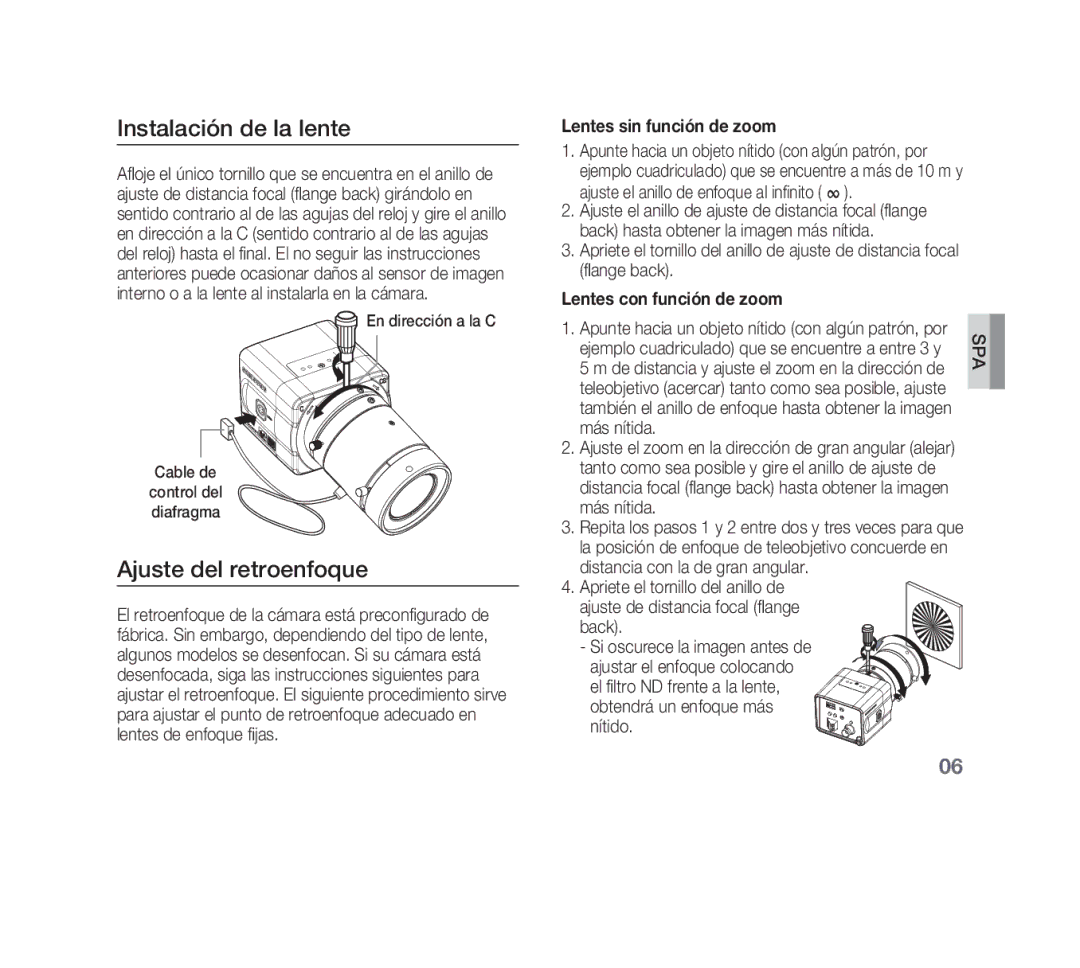SCC-B1311N, SCC-B1311P, SCC-B1011P/TRK, SCC-B1331P, SCC-B1011P specifications
The Samsung SCC-B1331, SCC-B1331P, and SCC-B1031P are notable models in the realm of surveillance cameras, designed to cater to a variety of security needs, particularly in commercial and industrial environments. These cameras underscore Samsung’s commitment to marrying advanced technology with practical functionality, delivering reliable surveillance solutions.One of the key features of the SCC-B1331 and SCC-B1331P is their superior image quality. Both models utilize a 1/3" CCD sensor, offering resolution up to 650 TV lines. This ensures that the images captured are sharp and detailed, which is crucial for identifying individuals or assessing a situation accurately. The SCC-B1031P, on the other hand, features a slightly lower resolution but still provides exceptional clarity for general surveillance tasks.
Low-light performance is another attribute of these models. The SCC-B1331 and SCC-B1331P incorporate Samsung's Digital Signal Processing (DSP), enhancing their ability to deliver clear images in challenging lighting conditions. This makes them suitable for deployments in indoor environments with variable lighting, such as warehouses or retail spaces. The SCC-B1031P, while it may not feature the same advanced DSP capabilities, still performs admirably in low-light conditions, making it a versatile option for various settings.
The cameras are designed with a range of flexibility in mind. They are equipped with a 3.6mm lens, which provides a wide field of view that is particularly beneficial for monitoring large areas. Furthermore, the models support flexible mounting options, allowing for easy installation in a variety of locations, whether wall-mounted, ceiling-mounted, or corner-mounted.
Built for durability, these Samsung cameras come with a robust housing that can withstand the rigors of different environments. They are suitable for both indoor and outdoor applications, especially when paired with appropriate protective housing.
Another crucial feature is the integration of Samsung's Backlight Compensation (BLC) technology, which helps mitigate the glare caused by bright backgrounds, ensuring that subjects are still visible. This is particularly beneficial in settings where lighting contrasts can obscure key details.
In conclusion, the Samsung SCC-B1331, SCC-B1331P, and SCC-B1031P stand out due to their high-resolution capabilities, advanced low-light performance, and versatile installation options. These features make them ideal choices for anyone looking to enhance their surveillance capabilities with reliable, robust camera solutions.

